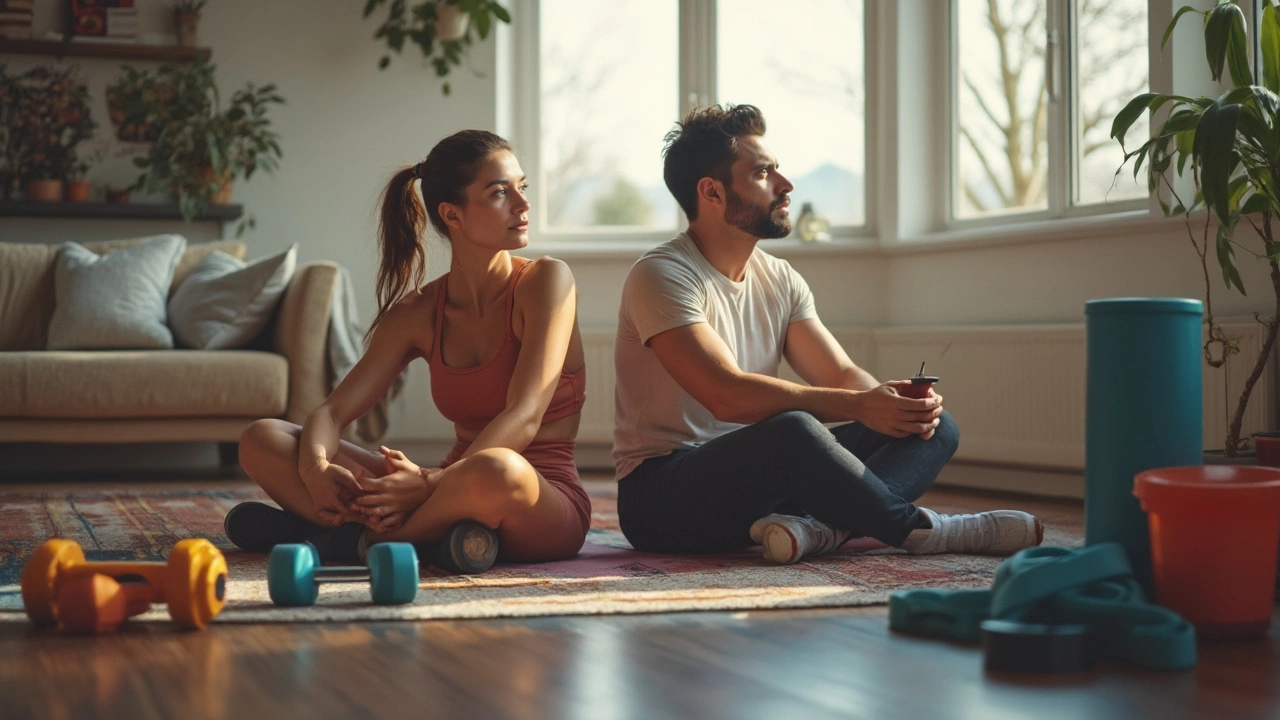Home Fitness Tips: Simple Strategies for Real Results
Working out at home feels like a win‑win: no commute, no crowded gym, and you set the pace. But a lot of people start with vague ideas and end up frustrated. Below are clear, step‑by‑step tips you can try right now to see real progress without overcomplicating things.
First, focus on tiny habits that add up. Simple moves like standing while you talk on the phone, taking the stairs, or doing a set of squats during TV commercials boost your non‑exercise activity thermogenesis (NEAT). Pair that with a protein‑rich snack after meals to keep metabolism humming. Small, consistent actions beat occasional marathon sessions.
When you want to target stubborn belly fat, choose exercises that engage multiple muscle groups and raise your heart rate. A 20‑minute HIIT circuit—30 seconds of jump squats, 30 seconds of push‑ups, 30 seconds of mountain climbers—followed by a short rest can torch calories fast. Add a few strength moves like planks and dead‑bugs to protect your lower back while you shred the tummy.
How long you stay in the workout zone matters just as much as what you do. Research shows a 45‑ to 60‑minute session hits the sweet spot for most goals. Anything under 30 minutes often lacks enough volume for strength gains, while over 90 minutes can lead to overtraining and burnout. Tailor the length to your schedule: busy days get a quick 30‑minute blast, rest days get a lighter 20‑minute mobility routine.
How Long Should Your Workout Be?
If you’re new to home training, start with 30 minutes three times a week. Split the time into a 5‑minute warm‑up, 20 minutes of focused work, and a 5‑minute cooldown. As you get comfortable, add 5‑minute increments until you hit the 45‑minute sweet spot. Remember, quality beats quantity—keep rest periods short (30‑60 seconds) to stay in a fat‑burning zone.
Watch how your body feels after each session. If you’re sore for more than two days, cut the volume or add an extra rest day. Consistency trumps occasional long marathons, so aim for a rhythm you can keep for weeks, not just a single intense workout.
Gear Up: Essentials for Beginners
You don’t need a full gym to get fit. A few versatile tools cover most moves. A set of adjustable dumbbells lets you progress from light to heavy without clutter. Resistance bands are cheap, travel‑friendly, and great for leg, back, and shoulder work. A slip‑resistant mat gives you a safe surface for floor exercises and stretches.
Start with these three items and upgrade only when you hit a plateau. The goal is to keep your space tidy and your workouts simple. When you feel ready, add a kettlebell for swings or a pull‑up bar for upper‑body strength.
Finally, lock in your new habits by pairing workouts with daily routines. Do a quick 5‑minute stretch right after brushing your teeth in the morning, or finish your evening TV show with a set of bodyweight squats. Small cues trigger consistency, and before you know it, those habits become second nature.
Home fitness is all about making the right moves, at the right time, with the right tools. Use these tips, stay patient, and watch your energy, strength, and confidence grow day by day.
